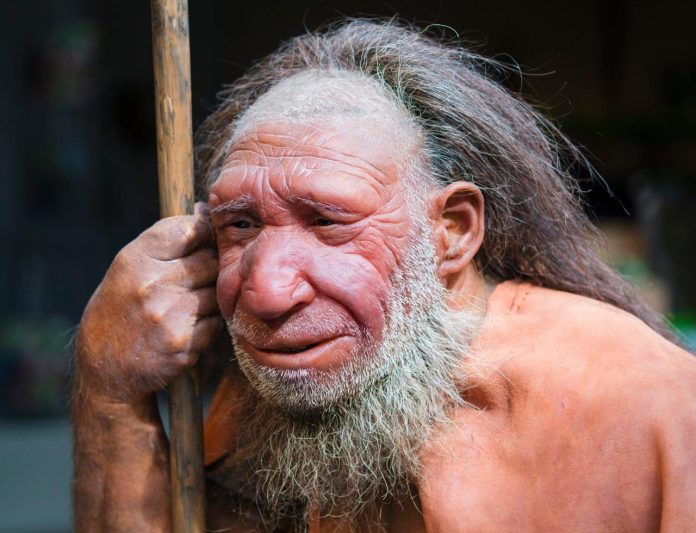Discover how Neanderthals and Homo sapiens, our ancestral cousins, differed. Find out about their physical differences, their genetic makeup, their cognitive abilities, and the factors that caused the extinction of the Neanderthals.
Discover the fascinating interplay between these two species, as well as the modern human DNA legacy inherited from our ancient ancestors. Get a better understanding of the evolution of humankind and its place in history.
Table of Contents
What are Neanderthals and Homo sapiens?
Homo sapiens and Neanderthals are both members of the Homo genus, but they were separate species that coexisted on Earth for a considerable period.
During the early prehistoric period, Neanderthals lived in Europe and parts of Asia, and their scientific name was Homo Neanderthalensis. Meanwhile, modern humans emerged in Africa around 300,000 years ago and spread throughout the world.
Physical Differences between Neanderthals and Homo Sapiens
The physical characteristics of Neanderthals and Homo sapiens are strikingly different.
Skeletal Structure
Adapted to the harsh Ice Age environment, Neanderthals had robust and stocky bodies. A general characteristic of them was their shorter height and more muscular build than that of Homo sapiens. The body structure of Homo sapiens, on the other hand, is more gracile, characterized by lighter bones and taller stature.
Body Proportions
For cold climates, Neanderthals had barrel-shaped chests that increased lung capacity. Their shorter limbs also contributed to their ability to retain body heat. Homo sapiens, on the other hand, had long limbs that allowed them to walk and endurance for long distances efficiently.
Cranial Features
The cranium of Neanderthals was characterized by a prominent brow ridge, a large nose, and a sloping forehead.
On the other hand, Homo sapiens had a narrower nose, a more vertical forehead, and a less pronounced brow ridge.
Genetic Differences between Neanderthals and Homo Sapiens

Researchers have recently discovered genetic differences between Neanderthals and Homo sapiens through the extraction and analysis of ancient DNA.
DNA Analysis
The Neanderthals and Homo sapiens shared a common ancestor, according to studies. The genetic divergence occurred between 600,000 and 700,000 years ago, however. The physical characteristics of Neanderthals were influenced by their unique genetic variants that differed from those of Homo sapiens.
Interbreeding
During certain regions where Neanderthals and Homo sapiens coexisted, genetic evidence suggests that interbreeding occurred. In non-African Homo sapiens today, a small amount of Neanderthal DNA is present due to interbreeding.
Cognitive Abilities and Behavior
Comparing and contrasting the cognitive abilities and behavior of Neanderthals and Homo sapiens can provide valuable insight into their similarities and differences.
Tool Use
The Neanderthals and Homo sapiens were equally adept at using tools. The tools Neanderthals used were Mousterian, which were expertly crafted and versatile for a wide range of tasks.
A higher level of adaptability and innovation was demonstrated by Homo sapiens, who developed blades and bone tools.
Artistic Expression
Besides artistic expression, there are other areas in which Neanderthals and Homo sapiens differ. Despite limited evidence of Neanderthal art, Homo sapiens left behind intricate cave paintings, sculptures, and symbolic objects that demonstrate their abstract thinking abilities.
Social Structure
The social structures of Neanderthals and Homo sapiens differed. There is evidence that Neanderthals lived together in small groups or extended families and that they cared for the elderly and buried their dead.
Compared to other species, Homo sapiens developed more complex social systems, including larger communities and cultural practices, indicating a higher level of cooperation and social organization.
Extinction of Neanderthals
Despite scientific advances, the extinction of Neanderthals remains a mystery. The reasons for their demise have been proposed by several theories.
Possible Causes
Various theories suggest the extinction of Neanderthals was caused by climate change, competition with Homo sapiens for resources, or both. During the transition from the Ice Age, their survival strategies could have been influenced by the changing environment, while the arrival of Homo sapiens may have made resource competition more intense.
Interaction with Homo sapiens
A fascinating area of study is the interaction between Neanderthals and Homo sapiens. Some interaction and gene flow occurred between the two species based on evidence of interbreeding.
There is, however, some question regarding the exact nature of these interactions and whether they were competitive or peaceful.
Modern Human DNA and Neanderthal Heritage
Recent genetic studies have revealed that non-African populations of Homo sapiens carry some Neanderthal DNA. Modern humans may carry the genetic legacy of Neanderthals through interbreeding.
Must Read: What are Ice Age Animals? Types of Ice Age Animals
Conclusion
We can gain valuable insight into how human evolution was shaped by comparing Neanderthals to Homo sapiens. Both species displayed remarkable cognitive abilities and displayed unique behaviors despite their physical and genetic differences.
Although the Neanderthals eventually disappeared, their genetic legacy remains in the gene pool of Homo sapiens. We can gain a deeper understanding of our place in Earth’s history through studying our ancient cousins.



